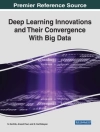In 2013, the International Conference on Advance Information Systems Engineering (CAi SE) turns 25. Initially launched in 1989, for all these years the conference has provided a broad forum for researchers working in the area of Information Systems Engineering. To reflect on the work done so far and to examine prospects for future work, the CAi SE Steering Committee decided to present a selection of seminal papers published for the conference during these years and to ask their authors, all prominent researchers in the field, to comment on their work and how it has developed over the years.
The scope of the papers selected covers a broad range of topics related to modeling and designing information systems, collecting and managing requirements, and with special attention to how information systems are engineered towards their final development and deployment as software components.
With this approach, the book provides not only a historical analysis on how information systemsengineering evolved over the years, but also a fascinating social network analysis of the research community. Additionally, many inspiring ideas for future research and new perspectives in this area are sparked by the intriguing comments of the renowned authors.Зміст
The CAi SE Adventure.- Evolution of the CAi SE Author Community: A Social Network Analysis.- A Natural Language Approach for Requirements Engineering.- Conceptual Modeling & Natural Language Analysis.- The Three Dimensions of Requirements Engineering: A Framework and its Applications.- The Three Dimensions of Requirements Engineering: 20 Years Later.- Towards a Deeper Understanding of Quality in Requirements Engineering.- 20 Years of Quality of Models.- METAEDIT+ A Fully Configurable Multi-User and Multi-tool CASE and CAME Environment.- Meta Edit+ at the Age of 20.- OO-METHOD: An OO Software Production Environment Combining Conventional and Formal Methods.- The Conceptual Model is The Code. Why Not?.- Architecture and Quality in Data Warehouses.- Data Warehouse Architecture and Quality: Impact and Open Challenges.- Time Constraints in Workflow Systems.- Workflow Time Management Revisited.- Adaptive and Dynamic Service Composition in e Flow.- Promises and Failures of Research in Dynamic Service Composition.- On Structured Workflow Modelling.- The Structured Phase of Concurrency.- A Requirements-driven Development Methodology.- The Evolution of Tropos.- The P2P Approach to Interorganizational Workflows.- Reflections on a Decade of Interorganizational Workflow Research.- Database Schema Matching Using Machine Learning with Feature Selection.- Automatch Revisited.- Data Integration under Integrity Constraints.- Rewrite and Conquer: Dealing with Integrity Constraints in Data Integration.- Automated Reasoning on Feature Models.- Automated Analysis of Stateful Feature Models.- Change Patterns and Change Support Features in Process-Aware Information Systems.- Process Change Patterns: Recent Research Use Cases Research Directions.- Measuring Similarity between Business Process Models.- A Short Survey on Process Model Similarity.- How Much Language is Enough? Theoretical and Practical Use of the Business Process Modeling Notation.- We Still Don’t Know How Much BPMN is Enoughbut We are Getting Closer.- The Future of CAi SE.












